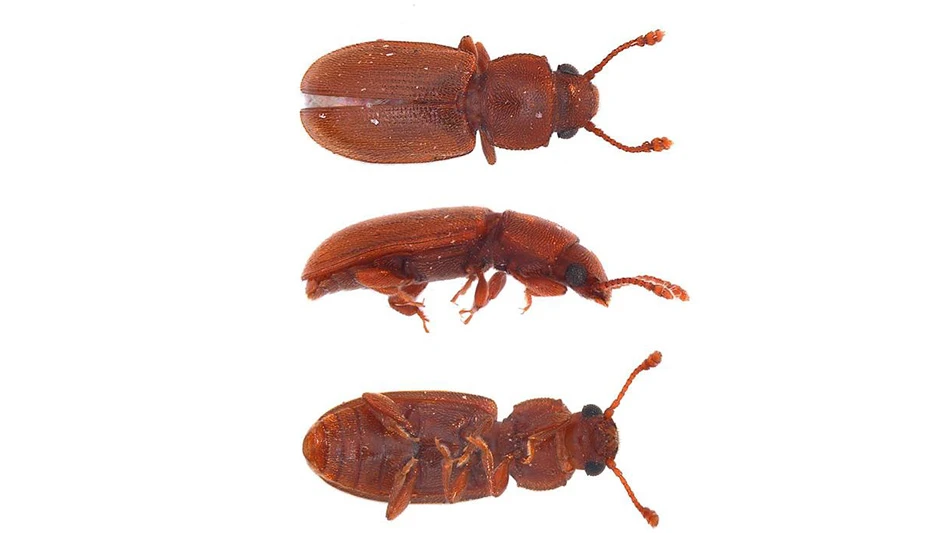
iStock
Editor’s Note: This article was reprinted from Techletter with permission of Pinto & Associates, Inc.
As a group, they're sometimes called mold or plaster beetles and several of them have "fungus beetle" in their name. The various fungus beetles are difficult to identify because most are tiny, brown, hairy, and easily confused with stored product beetles. Some common fungus beetles include the hairy fungus beetle (Typhaea stercorea), the plaster beetle (Cartodere constricta), and the silken fungus beetles (Family Cryptophagidae).
But the fungus beetle that you probably deal with most often goes by the common name of foreign grain beetle. Ahasverus advena is a tiny, brown beetle that looks similar to a flour beetle. The name is confusing because this beetle doesn't actually feed on grain at all although it can be found in stored grains. It's feeding on mold that is growing on the grain. As you would expect, this beetle is most often found in stored grains that are old, damp, and in poor condition.
You are just as likely to find the foreign grain beetle in situations where there is no stored food at all. Like some of the other fungus beetles, it is a frequent pest in new construction where it feeds on fungus growing on damp or "green" lumber, damp wallboard, new wallpaper, and other building materials that have not yet dried out. You won't necessarily find infested materials covered with a blue or green layer of mold. You often can't even see the fine layer of mold on the surface.
Fungus beetles are mainly a temporary nuisance pest unless you have a situation with a chronic moisture problem. Check around plumbing and all areas where there have been (or might be) moisture problems or leaks. Roof leaks wetting ceilings or walls are a common cause of fungus beetles. Other places to find fungus beetles are in moldy stored foods, moldy plant materials, rodent nests in wall voids, hoarded rodent food in hidden voids, and sometimes in ant or termite nests. In commercial accounts, you can find fungus beetles infesting new wooden pallets that are not seasoned. This can be a problem in warehouses where the beetles' presence can contaminate food products.
The management of fungus beetles is pretty obvious, and in structures can usually be accomplished without the use of insecticides. If there's a moisture problem, see that it's corrected. Then, take steps to dry out the site and/or discard the moldy materials if possible. In new construction, the beetles disappear eventually as the house or other structure gradually gets too dry to support fungus growth. The drying can be speeded up by increasing air circulation, using fans, heaters, and dehumidifiers. Adult beetles can be captured with a vacuum or with insect light traps. Fungus beetle problems can be seasonal, building up in warm, humid weather and dropping off naturally during periods of cooler, dry weather.
WANT MORE?
Enter your email to receive our newsletters.
Latest from Pest Control Technology
- Webinar: Employee Incentives — Going Beyond the Annual Raise
- Pest Control Companies Helping Neighbors in Need Eradicate Bed Bugs
- Why Does Marketing Feel So Opaque?
- How Did This Pest Get Its Name?
- Rose Pest Solutions Honors Top Performers with Annual Chief’s Club Awards
- Doug Foster on Termite Control Equipment, Resources
- Pest Control Consultants Acquires EcoGuard Pest Control
- Pest Index Increased 9 Percent YOY in February






